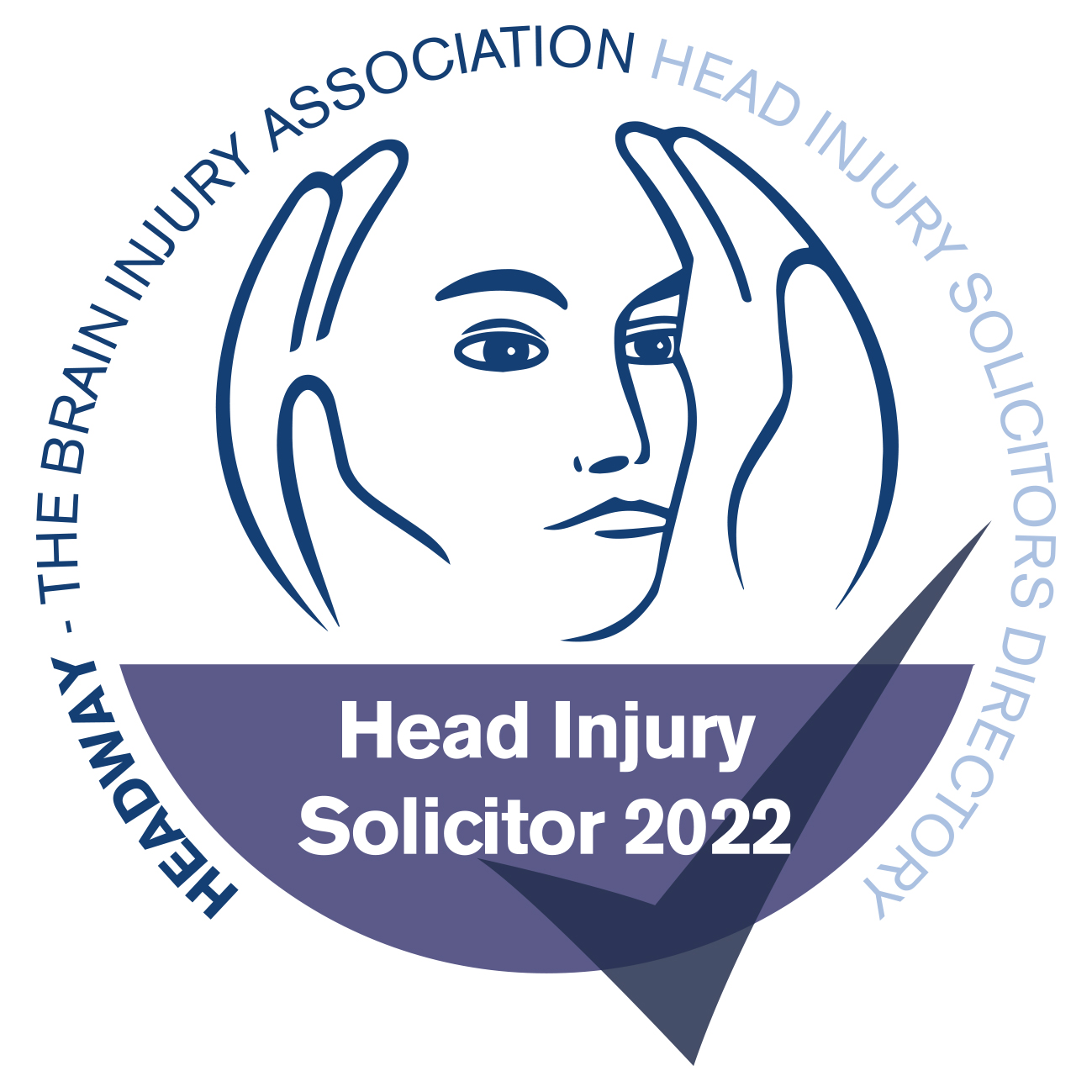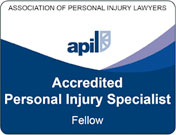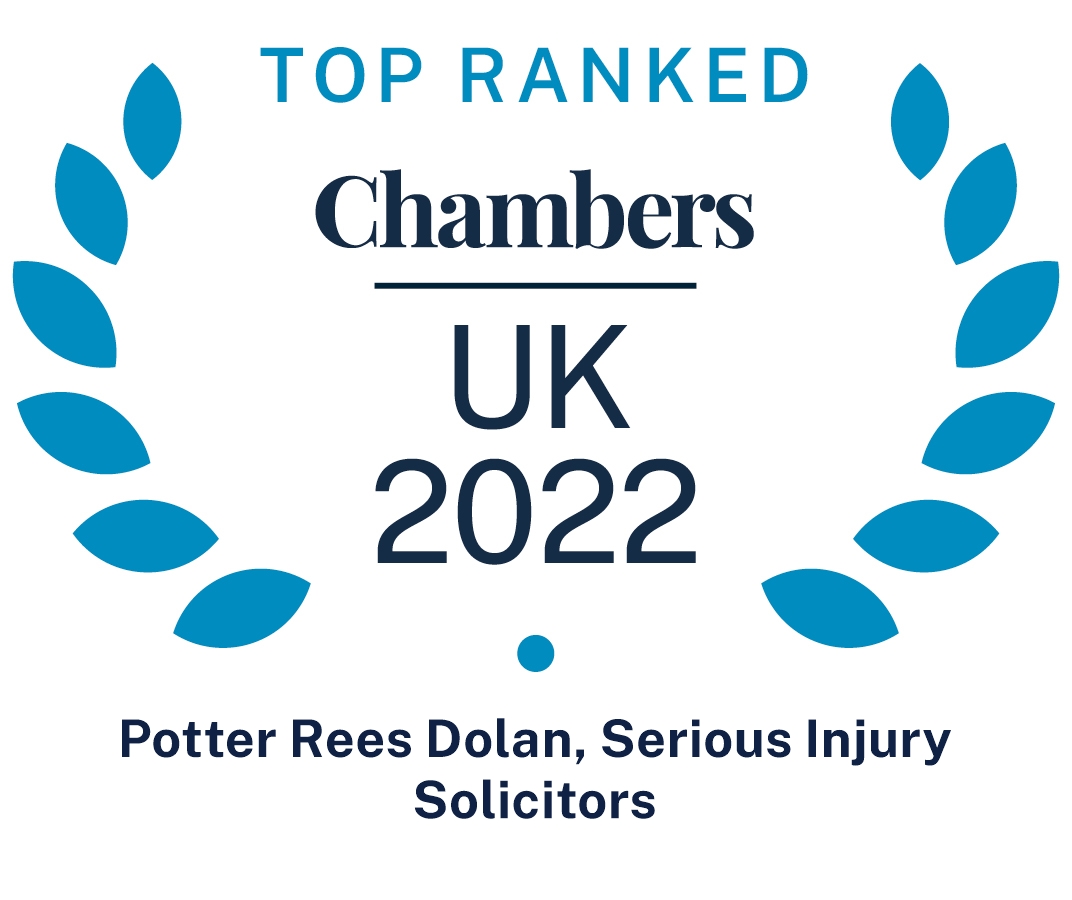Birth Injury Claims
Birth injuries are a traumatic and distressing event that can cause life-changing effects, including cerebral palsy. At Potter Rees Dolan, our experienced and highly trained solicitors specialise in dealing with traumatic and difficult birth injury claims.
Every day, we help families get the compensation they need for their children, ensuring they have the care and support they require for the rest of their lives. Our highly regarded clinical negligence team is led by Helen Dolan, Lesley Herbertson and Gill Edwards, who all feature in the prestigious Legal 500 and Chambers guides.
Our reputation as one of the best clinical negligence teams in the country is underpinned by our guiding principles of offering a personalised service to every single client we work with, and putting them and their best interests first.
To find out more about making a birth injury claim, call us on 0800 027 2557, or fill in the contact form on the side of the page to have one of our solicitors call you back at a time of your choosing.
How do I start a birth injury claim?
We will begin by discussing your situation with one of our colleagues. There we will establish if you have a case. If you do, then we will assist you in gathering all the relevant evidence so that your case has the greatest chance of success with maximum compensation.
Using our own specialists, as well as advice from medical experts, we will be able to determine whether you have been a victim of medical negligence. From there we will proceed with the case at the quickest speed so that you may find closure and justice at the earliest possible time.
Why choose Potter Rees Dolan for a birth injury claim?
At Potter Rees Dolan, we are known as one of the very best solicitors in the UK. After 60 years of experience in injury law and countless successful claims, we are dedicated to supporting families who are seeking reparations.
Members of our team are featured in the prestigious Chambers guide, where their expertise in injury, negligence and claims have been heavily praised. The Legal 500 has also described our leaders as capable, knowledgeable and able to work in even the most complex clinical cases. We understand the necessary expertise for this area of the law, and we are proud to lead in this area.
Not only are we experts in legal representation, but we are also known across the country for our exemplary customer care. Client feedback has highlighted our excellent communication and understanding, even in the most sensitive of cases.
In short, with our experienced and capable team, your case is in safe hands. Entrust us with your case and learn how you can finally find closure, support and financial compensation for the events you have suffered.
At Potter Rees Dolan, we are here for you.
What is a birth injury?
Birth injuries vary greatly. Some are short-lived, while others are permanent, causing disability that lasts a lifetime.
You may be unsure whether your child suffered a birth-related injury or not. For example, sometimes effects can only be seen in later years, such as when the child enters school.
Effects vary depending on the severity of the injury, as well as the injury itself.
If you would like to read some real-life examples of successful claims, then browse through our case studies, including the family awarded £10.6 million for a brain injury sustained during birth, and the successful case where a boy suffered from Erb’s palsy after an injury during birth.
What are the causes of birth injury?
Birth injuries can occur naturally but may also occur due to poor medical care during pregnancy, labour or after birth. Some examples are given below:
Causes of birth injuries during pregnancy
- Undiagnosed gestational diabetes
- Undetected preeclampsia
- Placental or uterine abruption
- Wrongful birth (undetected birth defects that may have led to termination of the pregnancy had the mother been aware of them)
Causes of birth injuries during labour
- Failure to monitor the baby’s heart rate adequately
- Delays in delivery
- Substandard use of forceps or ventouse
- Poor management of a shoulder dystocia
Causes of birth injuries post-delivery
- Delays in resuscitation
- Failure to treat severe postnatal jaundice
- Undiagnosed hip dysplasia
- Failure to diagnose hydrocephalus
- Viral and bacterial encephalitis
- Undiagnosed hypoglycaemia
Can you make a birth injury claim for cerebral palsy?
Cerebral palsy describes a group of chronic conditions affecting body movement and muscle coordination. If caused by medical negligence, then cerebral palsy may be eligible for a successful claim.
These conditions can also cause distress and concern for parents and other immediate family members, as they come to terms with the nature of the condition.
Cerebral palsy can vary in severity and cannot be cured. It may be associated with birth injury and can be subdivided into various categories, depending on the type and timing of the injury to the brain. These categories include:
- Ataxic cerebral palsy
- Spastic cerebral palsy
- Dyskinetic cerebral palsy
It is important to get a diagnosis and professional support as soon as possible, so that therapy and equipment can be put in place to maximise a child’s abilities and independence.
For more information, visit our dedicated cerebral palsy page, where you can learn more about whether you have a case for medical negligence.
How much does a birth injury claim cost?
If eligible under a Conditional Fee Agreement, you will not have to pay us a penny if your case is not successful. We can investigate your potential birth injury claim on a no win, no fee basis, and will explain how this Conditional Fee Agreement works at our very first meeting. We firmly believe that you should not have to pay to seek justice.
You may already have a legal expense insurance policy. In the first instance, we’ll always start by investigating whether you can use the same policy for your case, before considering whether a Conditional Fee Agreement may be more appropriate.
We provide flexible funding advice and can discuss the best plan for you and your family.
Contact us today.
If you would like to know how we can help you make a birth injury claim, contact us on 0800 027 2557 without delay. The sooner you contact us, the better the chances of being able to make a successful claim.
To request a call back, fill out the form on the side of the page or visit our contact page; if there is someone specific at the firm you would like to speak to, visit their profile on our people page.
FAQs
What sort of birth injury compensation payout can you receive?
The money awarded is based upon the characteristics of the injuries received, as well as their long-term effects. If you have lost work in the present or will be unable to work in the future due to your injuries, this will also be considered.
For a detailed view on payouts, one of our solicitors will be able to discuss it with you in greater detail.
Can the mother also receive compensation for injuries?
Injury can also be caused to the mother as a result of negligent care during the birth of her baby. There are a number of injuries such as improper anaesthetic, misdiagnosis, c-section trauma or improper use of forceps, along with many others.
In such cases, compensation may also be applicable to the mother. If you suspect you may have had a similar experience, please discuss it with a member of our team.
What are the long-term impacts of birth injuries?
Living with the consequences of a birth injury can be extremely challenging, placing enormous stress on all of those concerned.
As well as the huge emotional impact caused by a birth injury, you will have to deal with many practical issues, such as:
- requiring rehabilitation and treatment for the physical injuries sustained
- making alterations to your home to accommodate a disabled and growing child with cerebral palsy
- requiring carers to support you in caring for your child
- the impact of loss of earnings if you cannot return to work
- mental health and post-traumatic stress disorder (PTSD) issues associated with childbirth
What is the Apgar score?
The Apgar score is a way of monitoring the health of a newborn baby, via a test that is administered by a doctor, nurse or midwife at one minute after the baby is born. The test monitors five key indicators of the baby’s health and generates an overall score out of ten.
A healthy baby will usually receive an Apgar score of between seven and ten out of ten. An Apgar score of six or below can indicate that a baby needs urgent medical treatment or has sustained an injury during birth. These types of injuries can lead to cerebral palsy, Erb’s palsy, or other long-term health conditions, and may have been caused by negligence on the part of the medical professionals responsible for your baby’s delivery.
You can find more information on our Apgar score glossary page, including how to understand the score and what it means for your newborn.
Useful Information
Apgar Score
The Apgar Score, developed in 1952 by an anaesthesiologist called Victoria Apgar, is a quick check designed to determine the physical condition of a newborn baby immediately after birth.
The test is carried out by a doctor, midwife or nurse in the delivery room usually on two occasions: one minute after birth and then again five minutes after birth. Sometimes, if there are concerns about the baby's condition or the score at five minutes is low, the test may be taken for a third time 10 minutes after birth.
It is called the Apgar Score because it checks for Appearance (skin colouration), Pulse, Grimace (responsiveness), Activity (muscle tone), and Respiration (breathing rate and effort).
The scoring system
Each of the criteria is given a score of 0, 1 or 2 and then added together to generate a total score out of 10, which gives an idea of the overall health of the baby.
The scoring system works as follows:
Appearance:
- Normal colour all over (hands and feet are pink) = 2 points
- Normal colour (but hands and feet are blue-ish) = 1 point
- Blue-ish-grey or pale all over = 0 points
Pulse:
- Normal (above 100 beats per minute) = 2 points
- Below 100 beats per minute = 1 point
- Absent (no pulse) = 0 points
Grimace (responsiveness or ‘reflex irritability’):
- Pulls away, sneezes, coughs or cries with stimulation = 2 points
- Facial movement only (grimace) with stimulation = 1 point
- Absent (no response to stimulation = 0 points
Activity:
- Active, spontaneous movement = 2 points
- Arms and legs flexed with little movement = 1 point
- No movement - ‘floppy’ muscle tone = 0 points
Respiration:
- Normal rate and effort, good cry = 2 points
- Slow or irregular breathing, weak cry = 1 point
- Absent (no breathing) = 0 points
The majority of newborns are scored between seven and 10, meaning they do not require any immediate treatment. Scores of 10 are unusual, because most newborns will lose a point for having blue hands and feet, which is typical after birth.
Scores lower than seven suggests the baby needs medical attention, and if the score remains low after multiple tests, then there is a risk that the child will suffer longer-term neurological damage.
Emergency Caesarean Section
This procedure is usually carried out when a normal vaginal delivery would put the mother or the baby at risk.
However, an emergency caesarean is performed when circumstances before or during labour call for an unplanned procedure.
A caesarean section is usually carried out under an epidural or a spinal anaesthetic causing the lower part of the body to be numbed. The procedure usually takes 40-45 minutes but, during an emergency, can be performed quicker.
The risks to the mother in a caesarean section can include an infection of the wound or the womb lining, a blood clot (thrombosis) in the legs or excess bleeding.
Doctors now give the mother a dose of antibiotics before the operation to reduce the likelihood of any infections.
Risks to the baby during a caesarean, according to the NHS, are no greater than a normal vaginal delivery but the most common problem of babies delivered by caesarean is difficulty breathing, although this usually affects babies born prematurely.
Erb's Palsy
This condition is usually caused by a traumatic childbirth where the baby's arm is paralysed when the upper group of the arm's main nerves is injured.
Erb's Palsy, or otherwise known as brachial plexus paralysis, can occur if the infant's head and neck are pulled toward the side at the same time as the shoulders pass through the birth canal.
The condition can also be caused by excessive pulling on the shoulders during a cephalic presentation (head first delivery), or by pressure on the raised arms during a breech (feet first) delivery.
Other causes can include a raised BMI of the mother at time of baby's birth, a high weight at birth and a long second stage of labour.
The child is usually unable to abduct the arm from the shoulder, rotate the arm externally from the shoulder or supinate the forearm giving them a 'waiter's tip' appearance.
Hand grasp in children with Erb's Palsy is usually normal unless the lower part of the plexus is also damaged.
Some babies recover on their own but some need specialist treatment.
Gestational Diabetes
Diabetes is condition where there is too much glucose in the blood which is controlled by a hormone called insulin.
The illness is caused by either insufficient insulin being produced or the body is becoming resistant to insulin.
Gestational diabetes is when, during pregnancy, the woman's body produces a number of hormones which make her body insulin-resistant. The purpose of this hormonal effect is to allow the extra glucose and nutrients in your blood to pass to the foetus so it can grow.
Her body should produce more insulin in order to cope with the increased amount of glucose in the blood. However, some women cannot produce enough insulin in pregnancy to transport the glucose to the cells or their body is becoming more resistant to insulin.
Pregnant women may be more likely to have gestational diabetes if her body mass index is high, if they have previously had a baby weighing more than 10lbs at birth or if they have a family history of diabetes.
Some women may need medication to control their glucose levels but most can control the gestational diabetes through diet and exercise.
Gestational diabetes is usually developed after 28 weeks and usually disappears after the baby is born. However, women who develop gestational diabetes are more likely to develop type 2 diabetes later in life.
If the gestational diabetes is not detected it can cause problems during and after birth.
These include; a risk of the child becoming obese or have diabetes later in life, trauma during birth and placental abruption whereby the placenta starts to come away from the wall of the womb which can cause vaginal bleeding and abdominal pain.
Other complications which can occur include; needing to induce labour, premature labour and even perinatal death, where the baby dies around the time of the birth.
Hypoxic-Ischemic Encephalopathy (HIE)
This brain injury occurs in newborn babies and is caused by oxygen deprivation to the brain, also known as intrapartum asphyxia.
Although a newborn's body can manage for brief periods of time with reduced oxygen, if it lasts too long then the brain tissue is destroyed.
Hypoxic-ischemic encephalopathy due to fetal or neonatal asphyxia is a leading cause of death or severe impairment among infants.
Effects of this brain injury can include delays in neuro-development, cognitive impairment and epilepsy; the area of the brain injury can depend on the timing and severity of the asphyxia.
MRI scans are usually performed once hypoxic-ischemic encephalopathy is suspected to aid diagnosis.
Although there is no definite cure for HIE. any treatment includes helping the child adapt to symptoms of the brain injury and physical and occupational therapy is commonly used.
Necrotising Enterocolitis
Primarily found in premature infants, this medical condition is when parts of the bowel undergo 'necrosis' meaning tissues become inflamed and start to die.
A perforation (hole) may develop which can allow the contents of the intestine to leak into the abdomen which can cause a very dangerous infection.
The symptoms of Necrotising Enterocolitis (NEC) include problems feeding or vomiting a a swollen and tender abdomen. According to Great Ormond Street Hospital, NEC is the most common surgical emergency in newborn babies.
If a perforation does not form, then surgery may not be needed, instead, the baby's bowel should be rested from intravenous feeding.
There is a risk of further bowel damage during surgery as well as a risk of bleeding during of after the operation. Future progress can depend on how prematurely the child was born and whether the bowel was removed during surgery which can effect normal growth and development.
Ovarian Hyperstimulation Syndrome
This is a rare but serious consequence of taking fertility drugs during in-vitro fertilisation (IVF) treatment.
This complication occurs in women who are very sensitive to the fertility drugs taken to increase egg production, causing too many eggs are produced which makes the ovaries become very large and painful.
Symptoms of Ovarian Hyperstimulation Syndrome (OHSS) begin with abdominal pain and bloating; these symptoms usually appear 4 or 5 days after the eggs are collected.
More severe symptoms include low levels of protein in the blood and decreased output of urine which can become very dangerous.
OHSS is more common in women under 30 and those with Polycystic Ovary Syndrome.
A mild degree of OHSS occurs in 33% of IVF treatment whereas the more severe cases occur in 1-2% of IVF where the patient is ill with severe pain, nausea and vomiting.
Spinal epidural haematoma - Over Anti-coagulation
This injury can be caused by a number of factors including childbirth or surgery where bleeding into the epidural space in the spine can occur.
However, here we are focusing on epidural haematoma caused by over anti-coagulation.
In the spine, the epidural space contains loose fatty tissue and a network of large, thin-walled veins. This means that bleeding is likely to be venous.
Anatomical abnormalities and bleeding disorders make these lesions more likely. They may cause pressure on the spinal cord or cauda equina. The diagnosis may be made on clinical appearance and time course of symptoms. It usually requires MRI scanning to confirm. The treatment is surgical decompression.
However, when epidural haematoma is caused by over anti-coagulation, the sufferer will be on anticoagulant medication which prevents the blood from clotting.
Over anti-coagulation is when the patient has taken too many anticoagulant drugs which can result in bleeding or bruising easily. This can then affect the epidural space and can lead to haematoma and even paraplegia.
Read about a case of Helen Dolan's which settled for a lump sum of £2.3 million after an elderly woman suffered an epidural haematoma due to over anti-coagulation.












